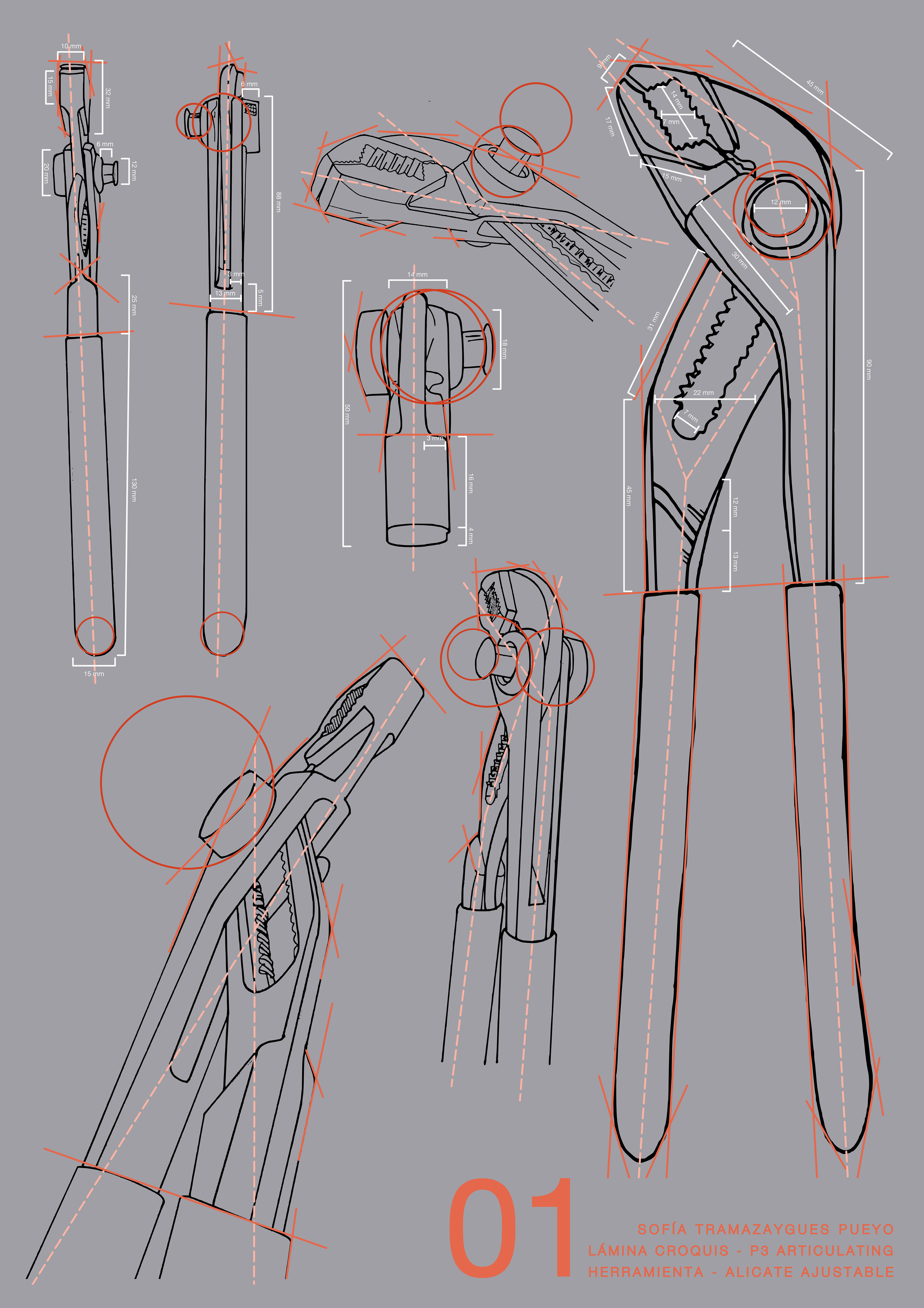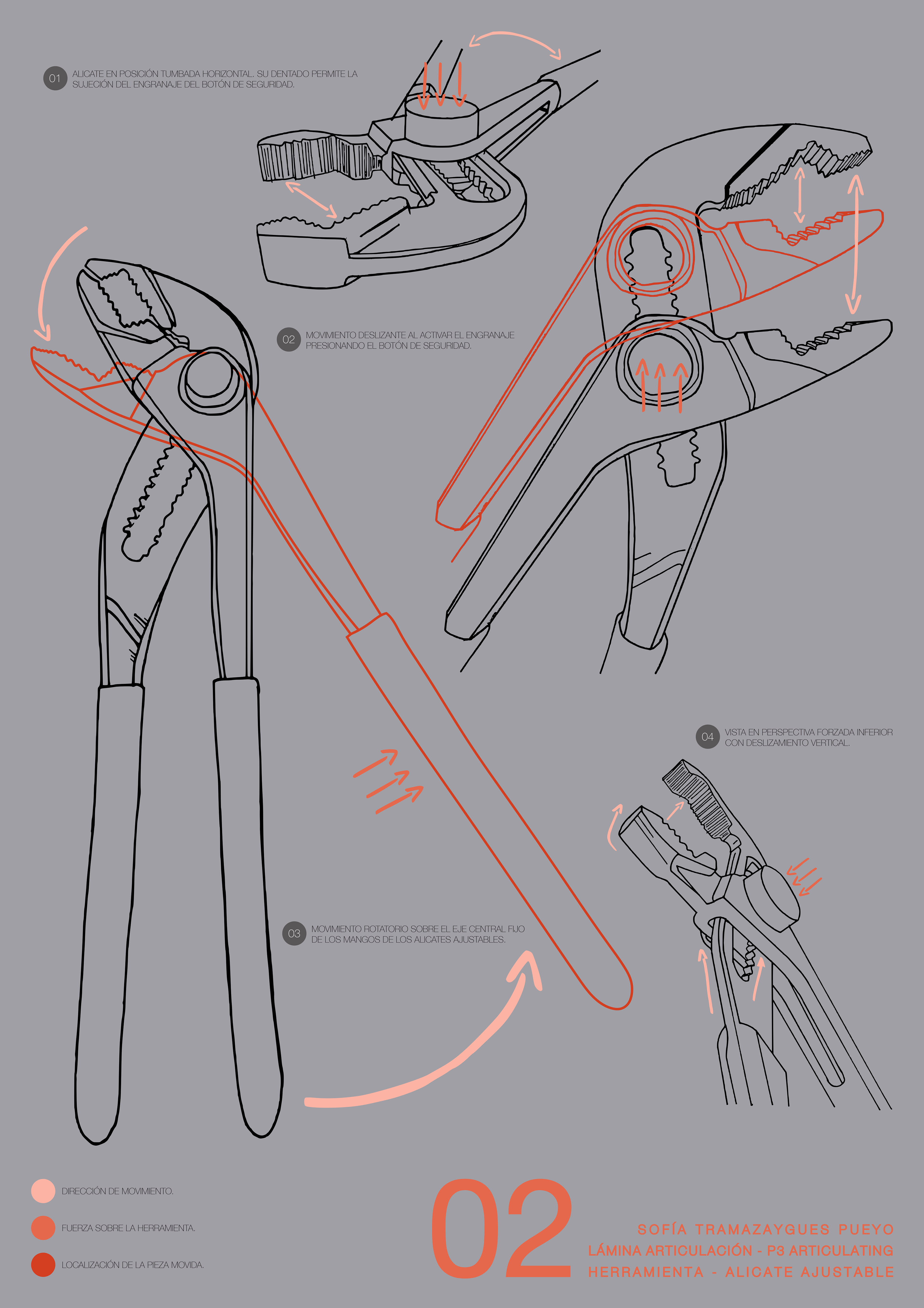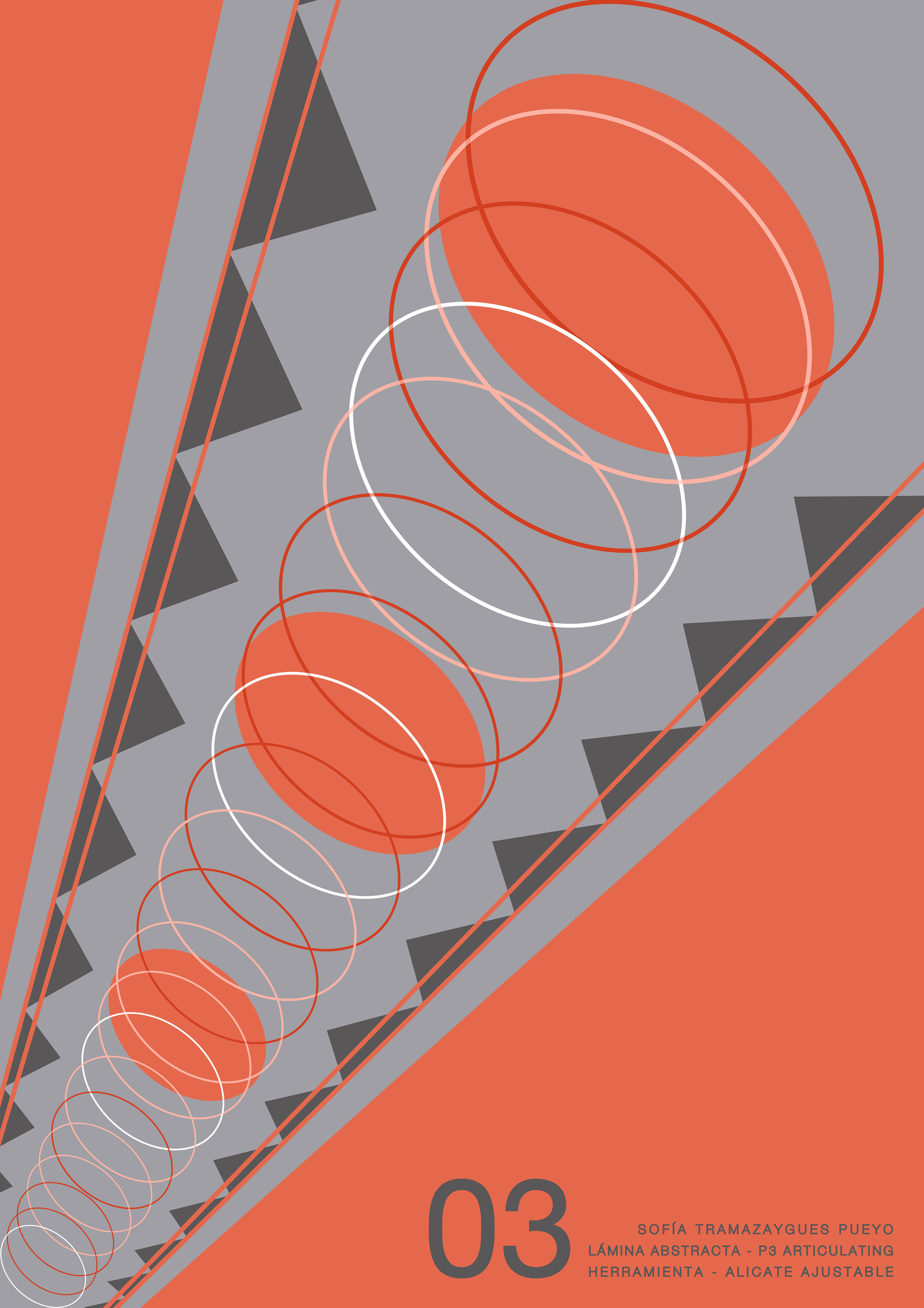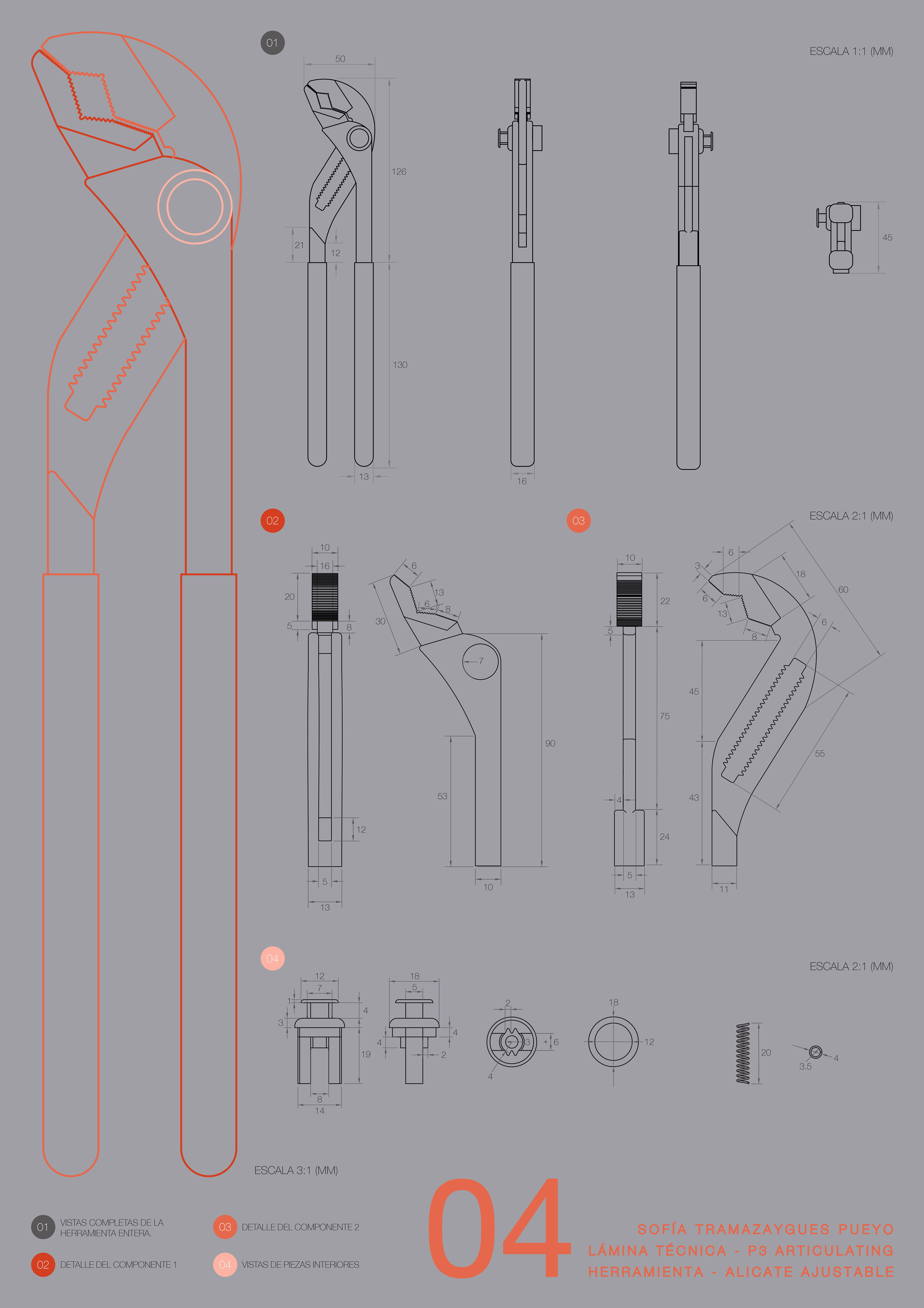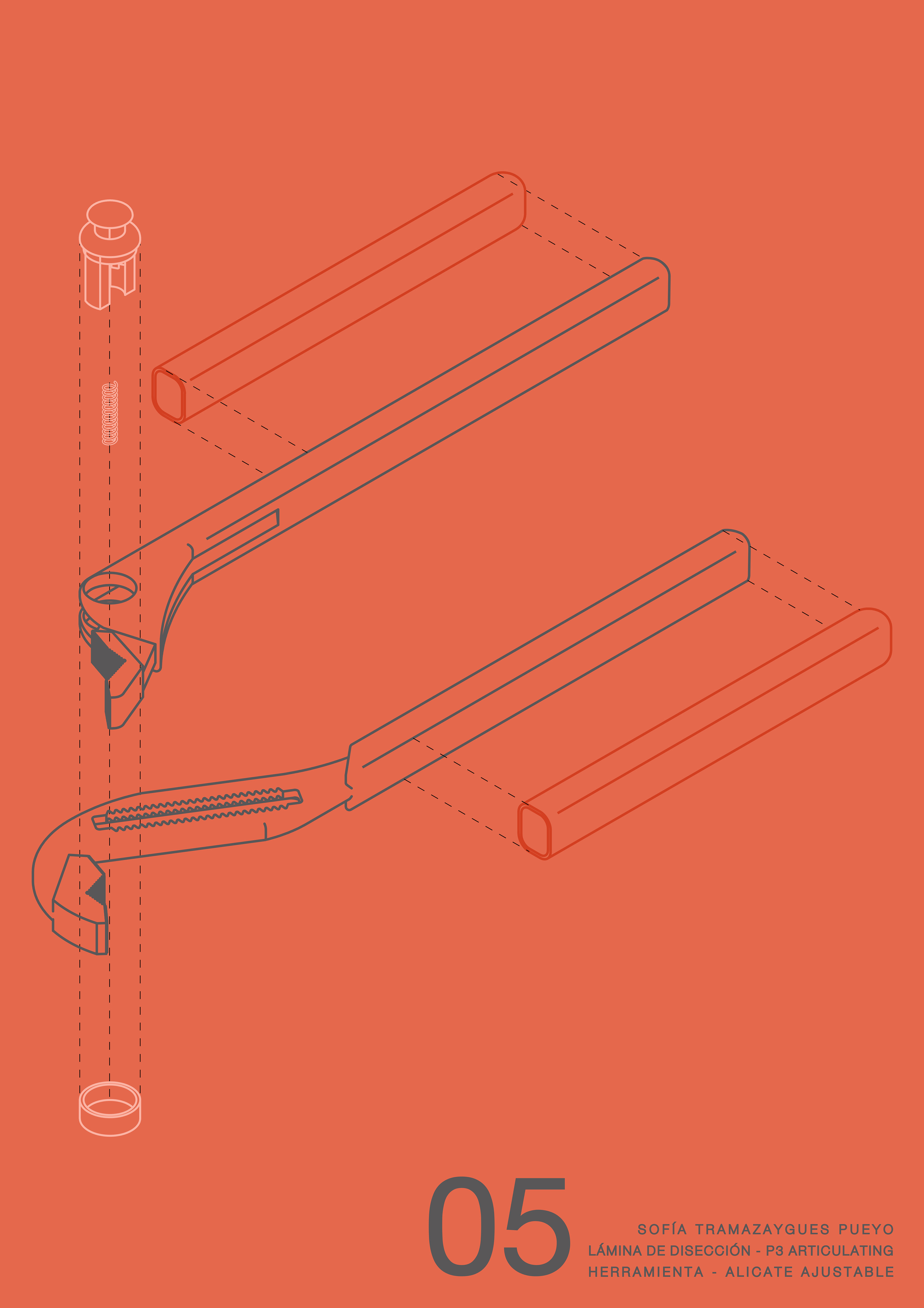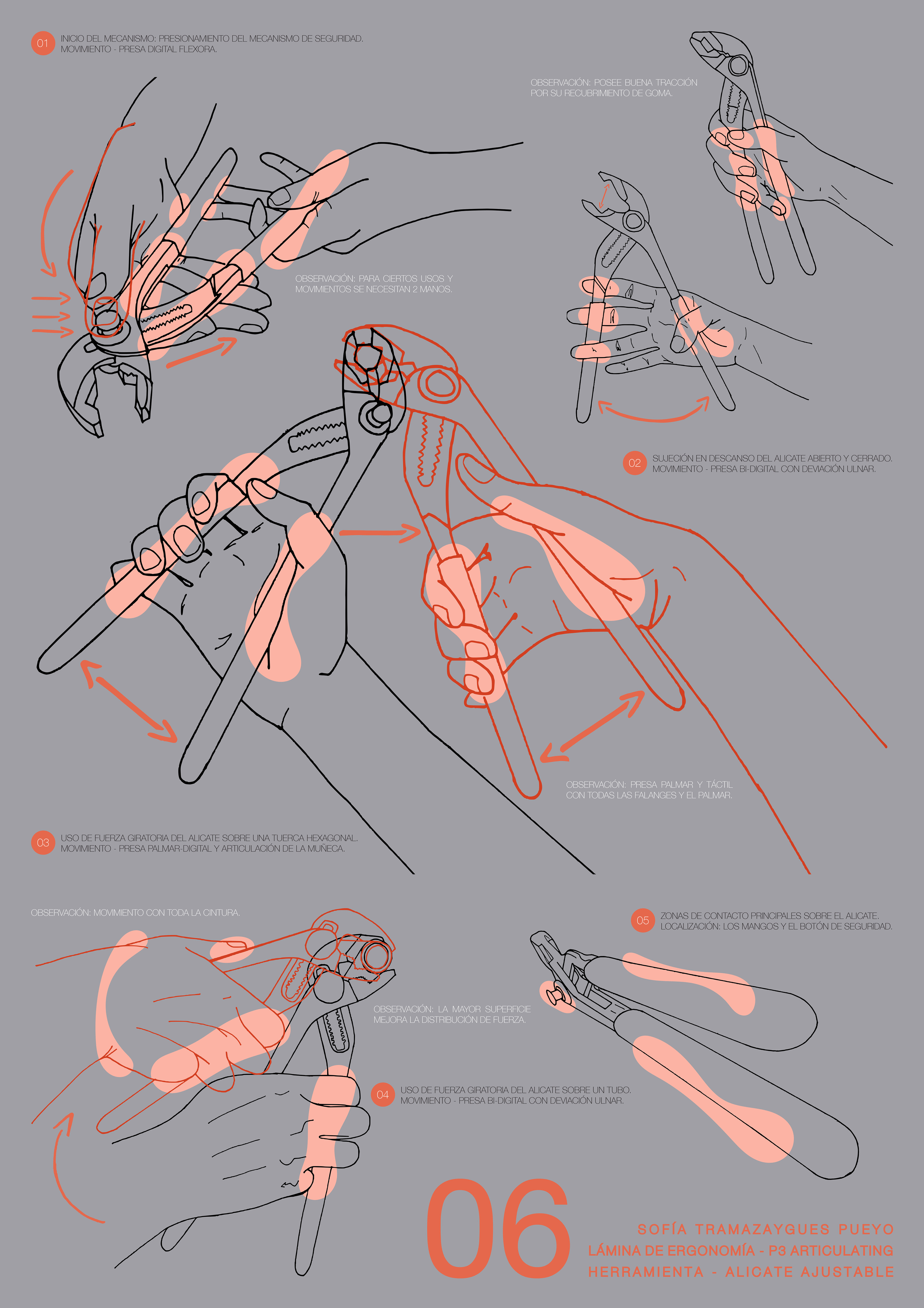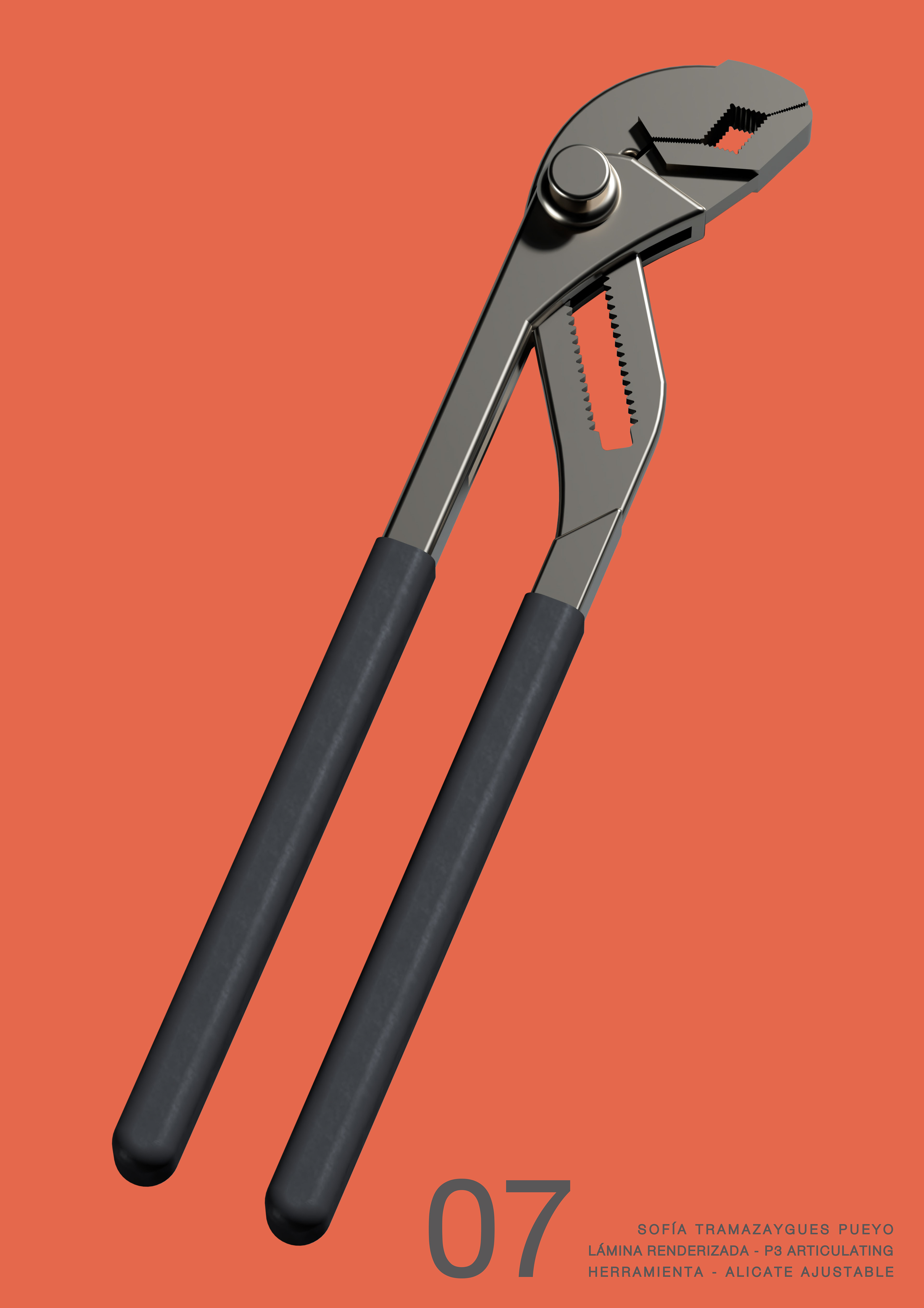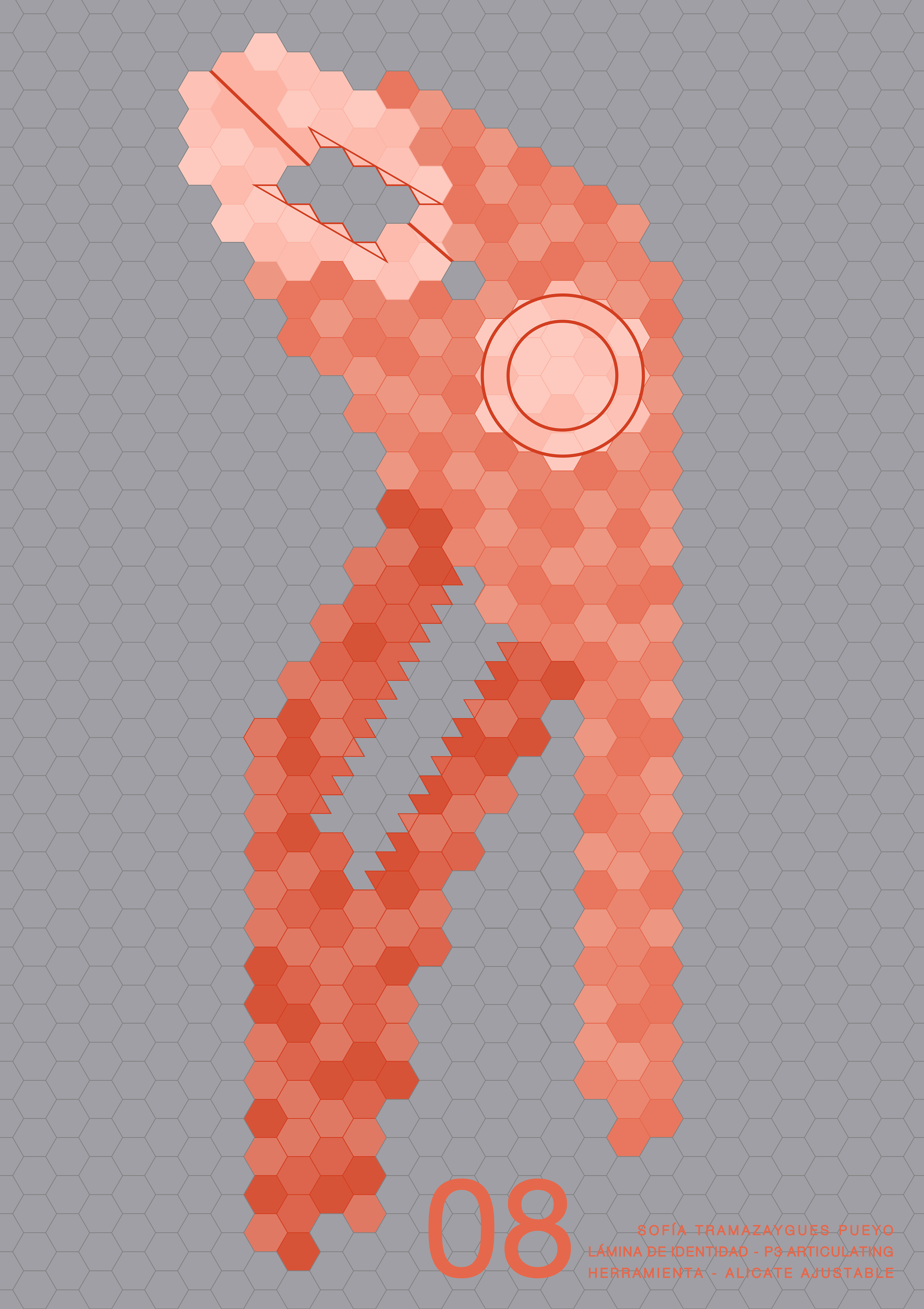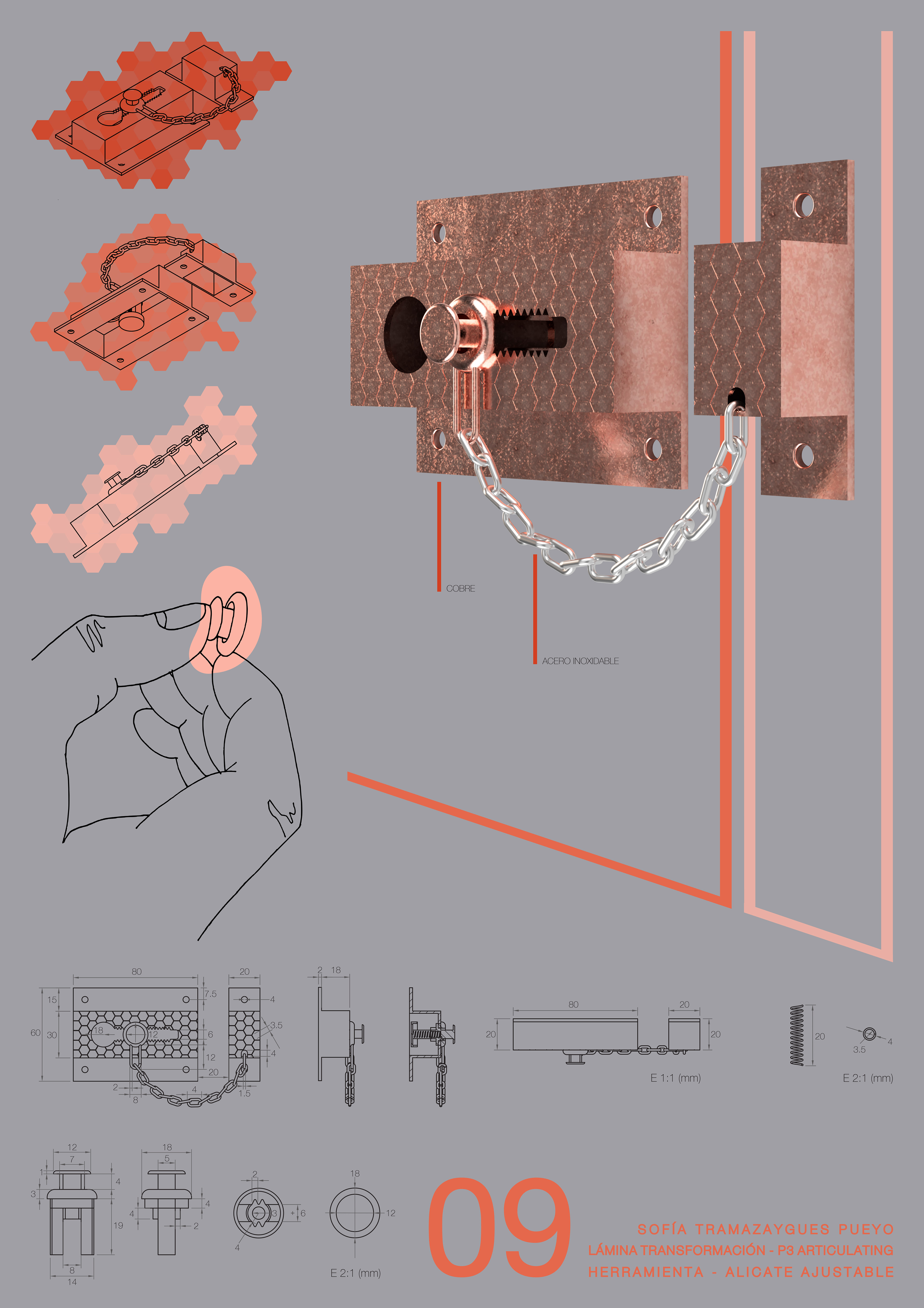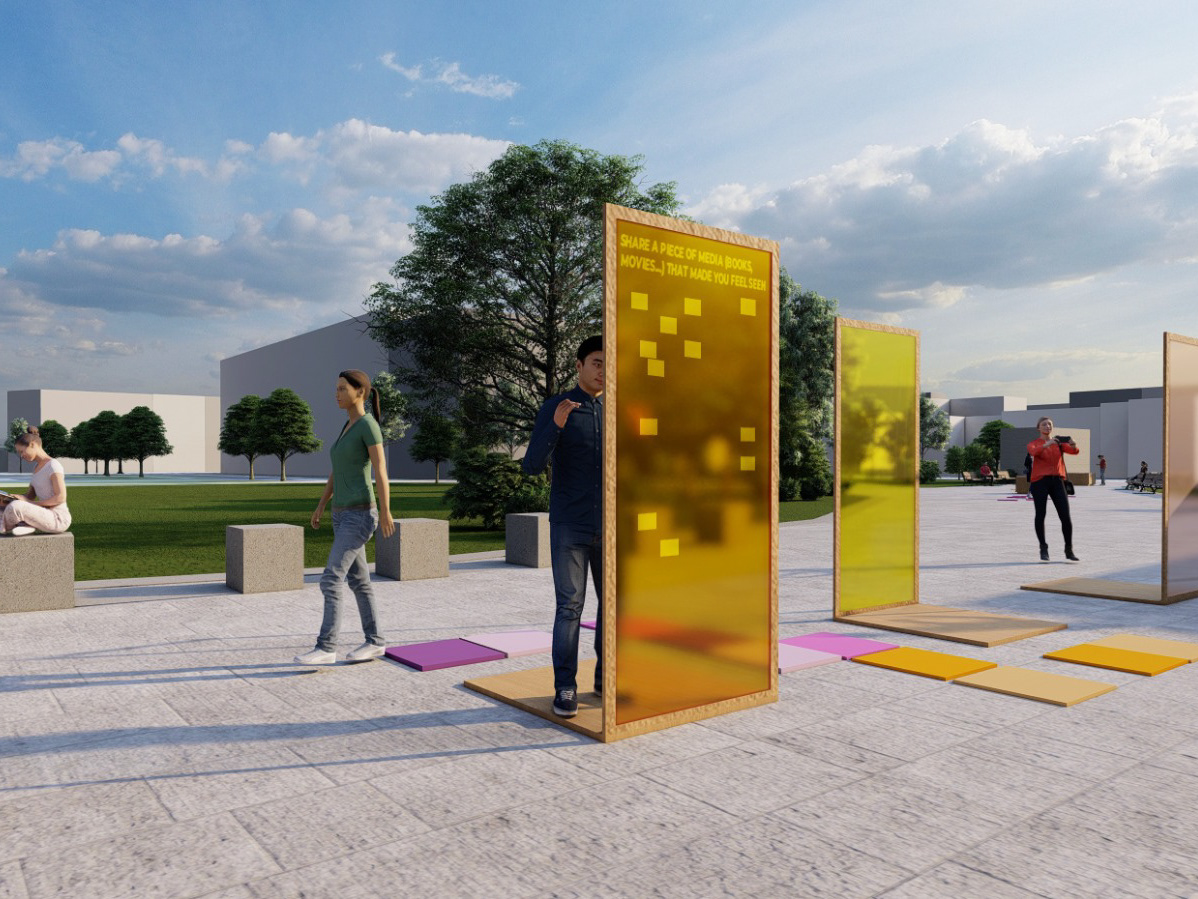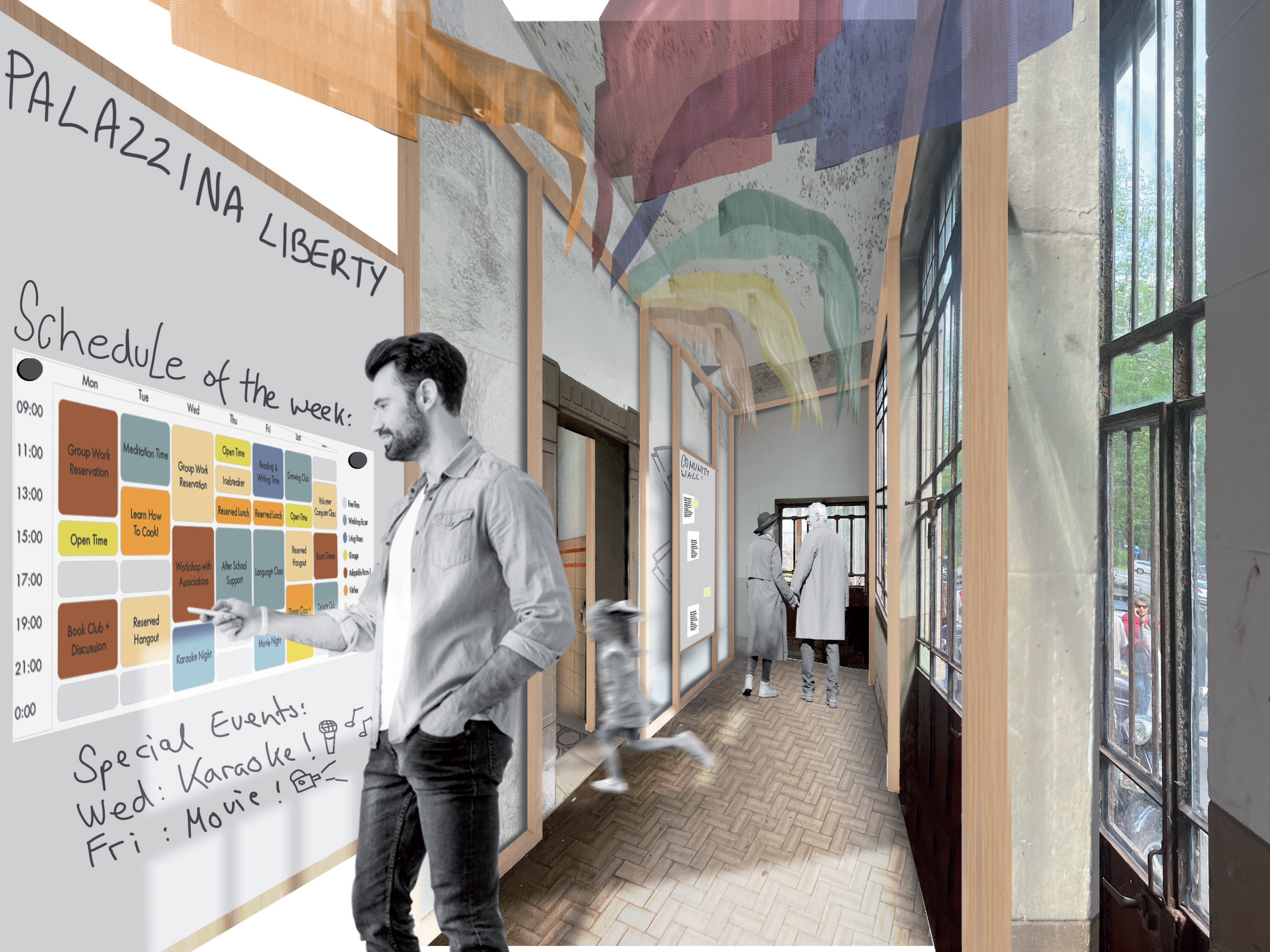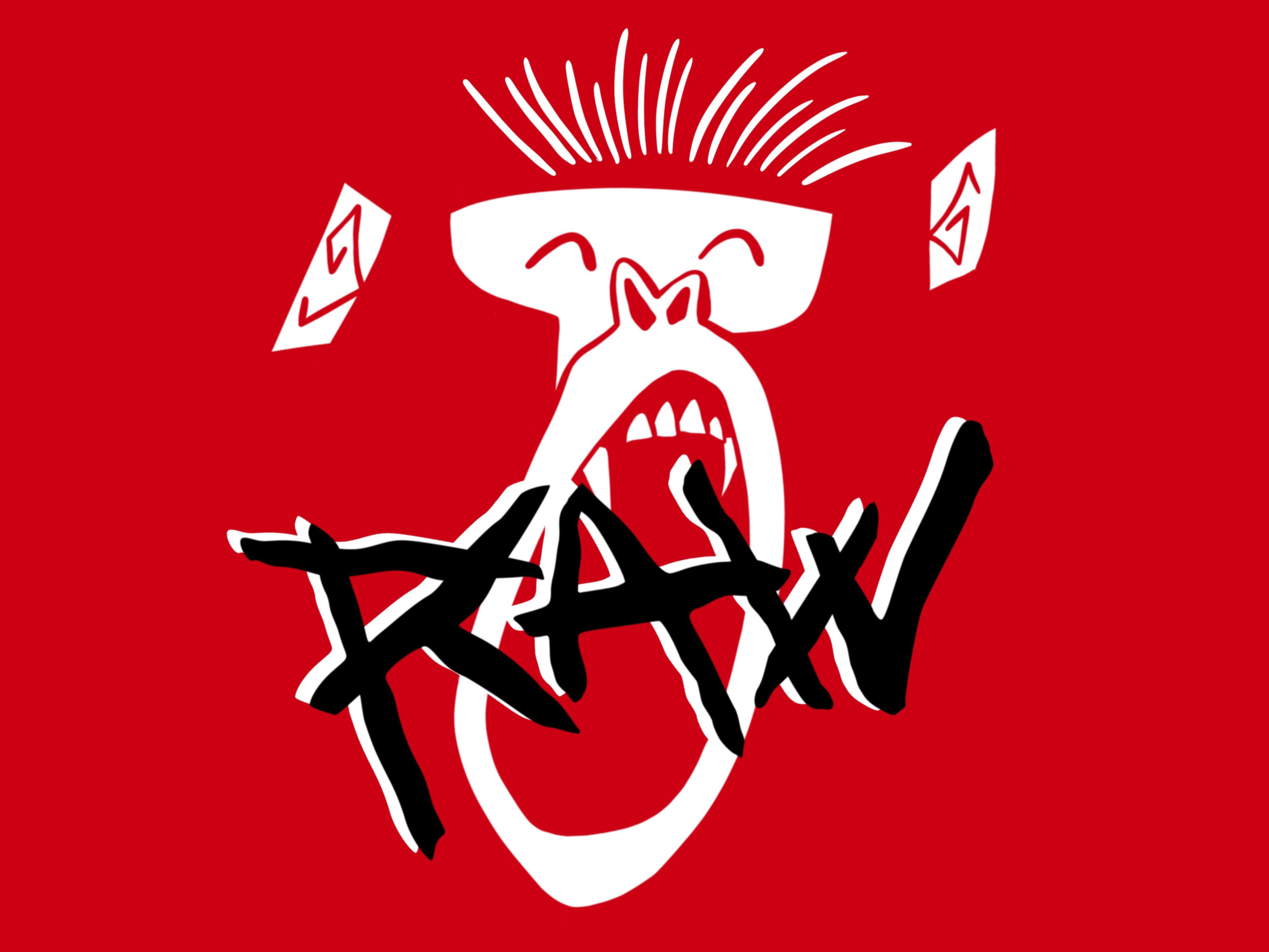Through the analysis of a well known tool we can learn an awful lot about articulations, mechanisms and other such important elements. The analysis itself can lead to meaningful conclusions and observations, despite the notion that if the tool works, then it is at optimum condition and design.
Expressive, Vibrant, Accurate
These are the sensations intended through the graphic and technical analysis of the pliers tool. An in-depth analysis of the adjustable pliers is performed through various manners.

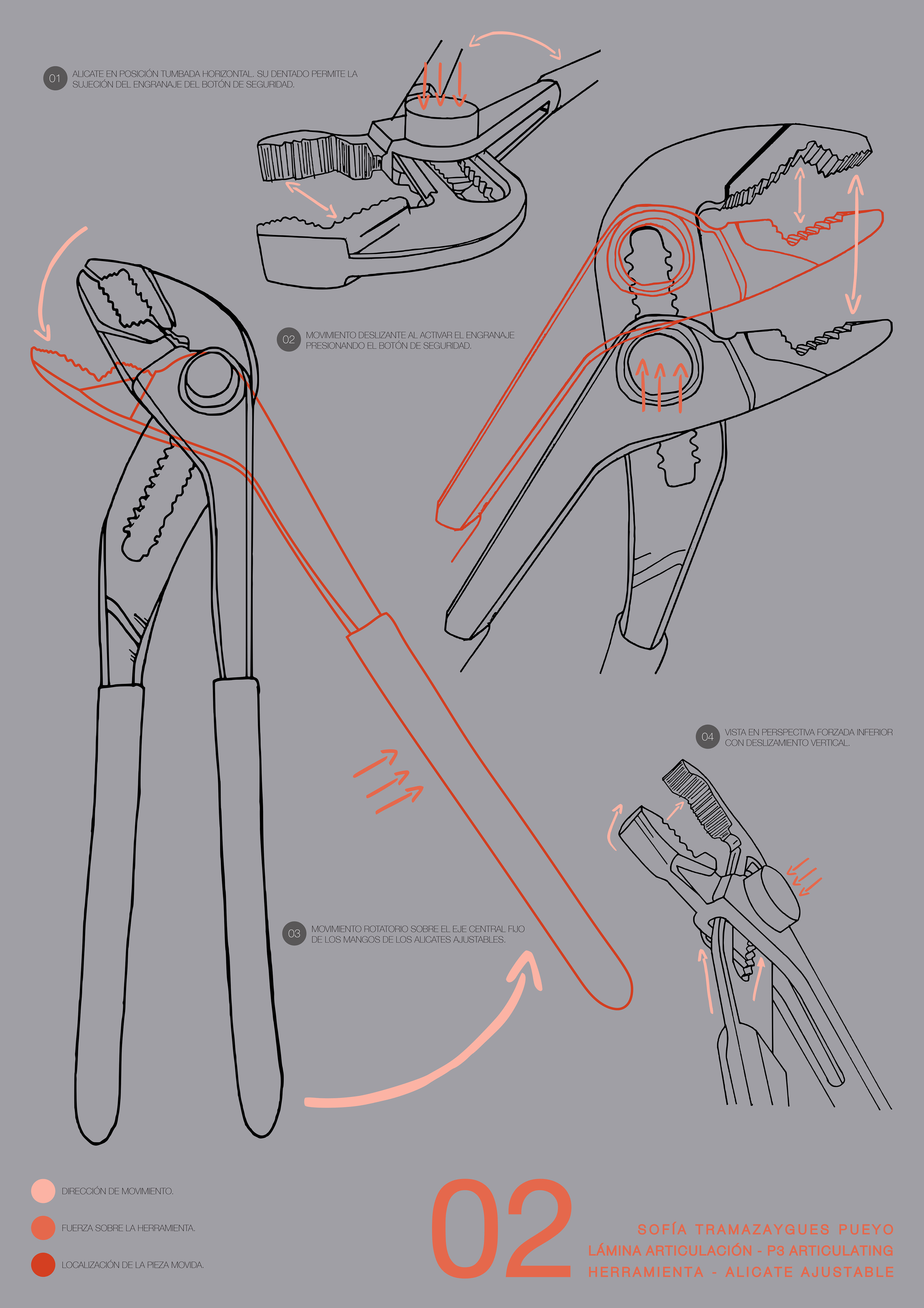
1.) Expressive Analysis
The varied angles and geometric shapes that these perspectives create are the main element of interest, which is represented by the color palette present in the tool itself: gray and variations of orange.
2.) Function
The mechanism of the pliers and its articulation are what makes it recognizable to the user. The two main joint movements are shown: the rotary one to open and close the handles, and the sliding one to adjust the grip of the pliers.
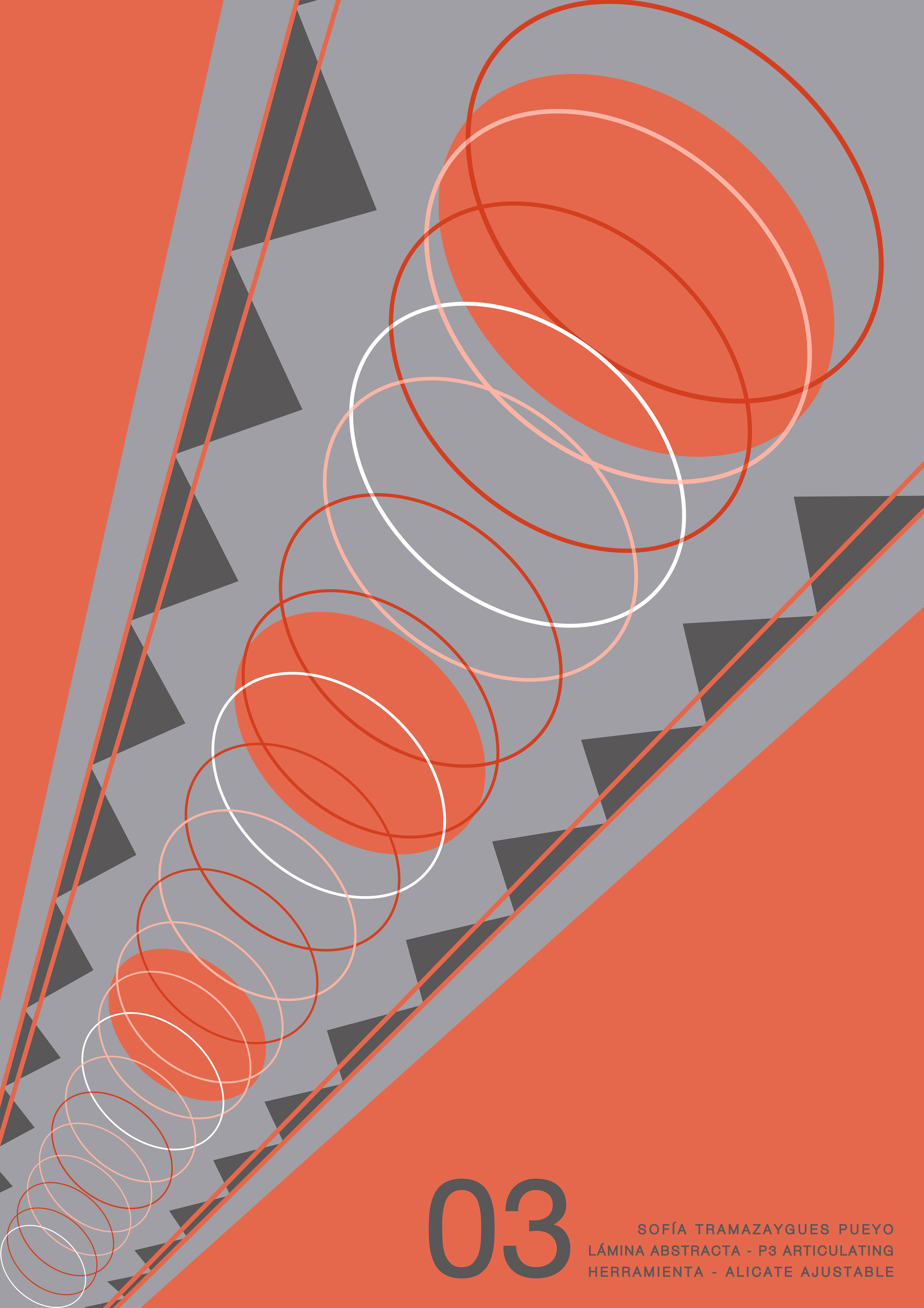

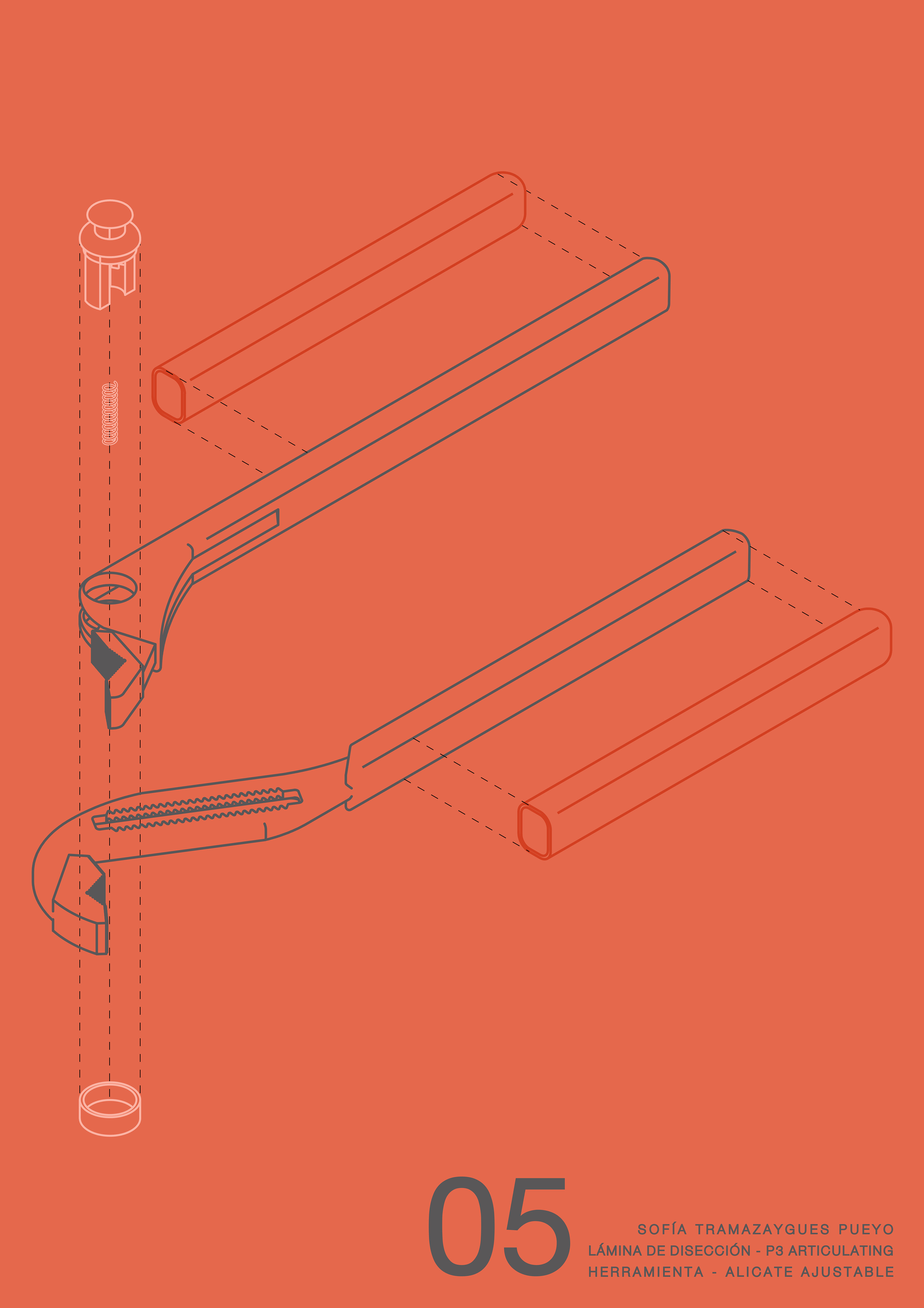
3.) Calculated Zoom In
A highlighted aspect of the pliers are its “teeth”, and how they allow the sliding movement of the opposite handle. This is abstracted in an enlarged way, with the movement created through its focal perspective and its interlocking circles.
4.) Precise Detail
The representation of the exact measurements of the assembled and disassembled components provides a scaled view of the dimensions. Components are divided by color to show where they are located.
5.) Decomposition
To understand the distribution of the pieces, each component was dissected based on guidelines and the separation of colors for visual guidance.
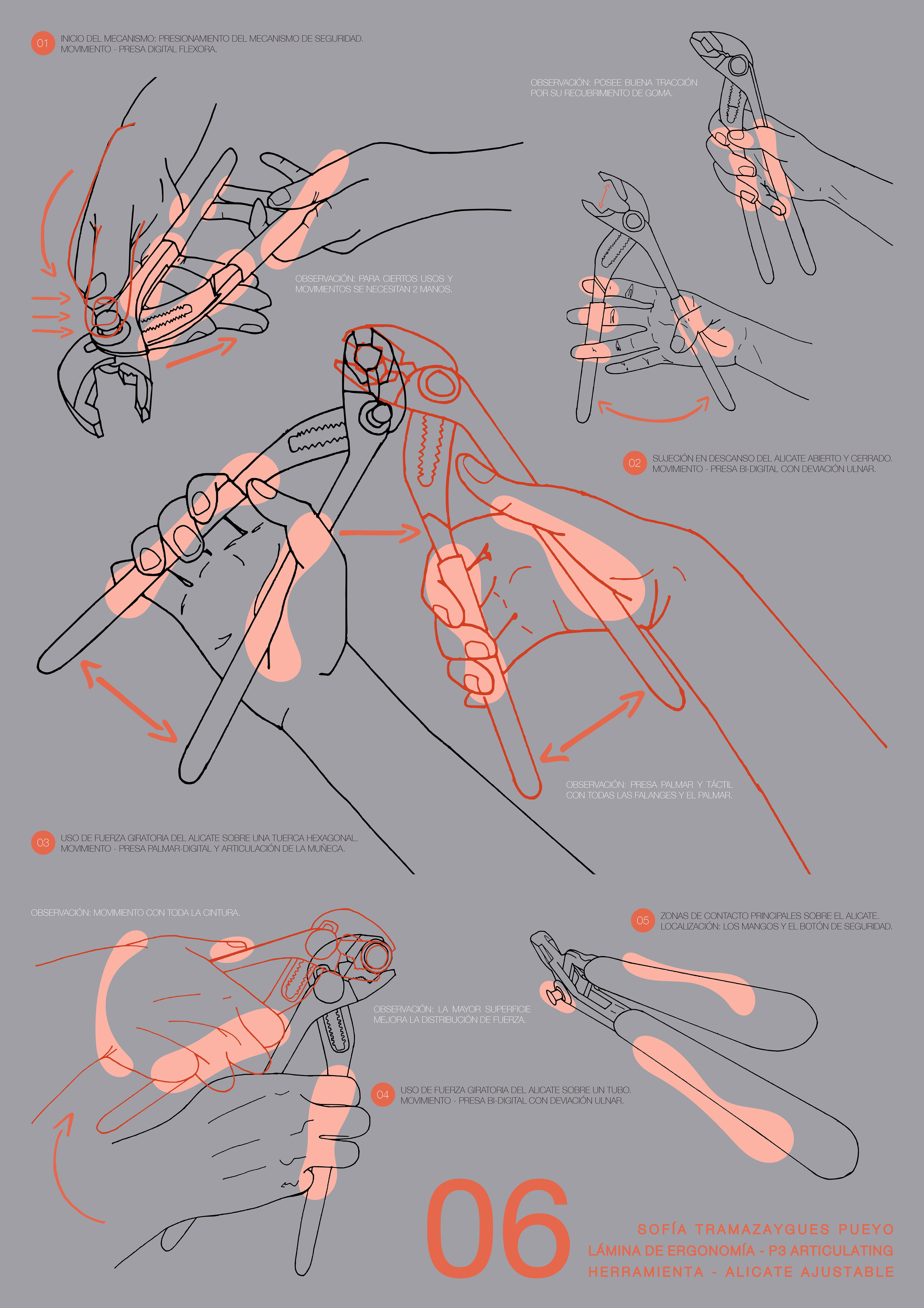
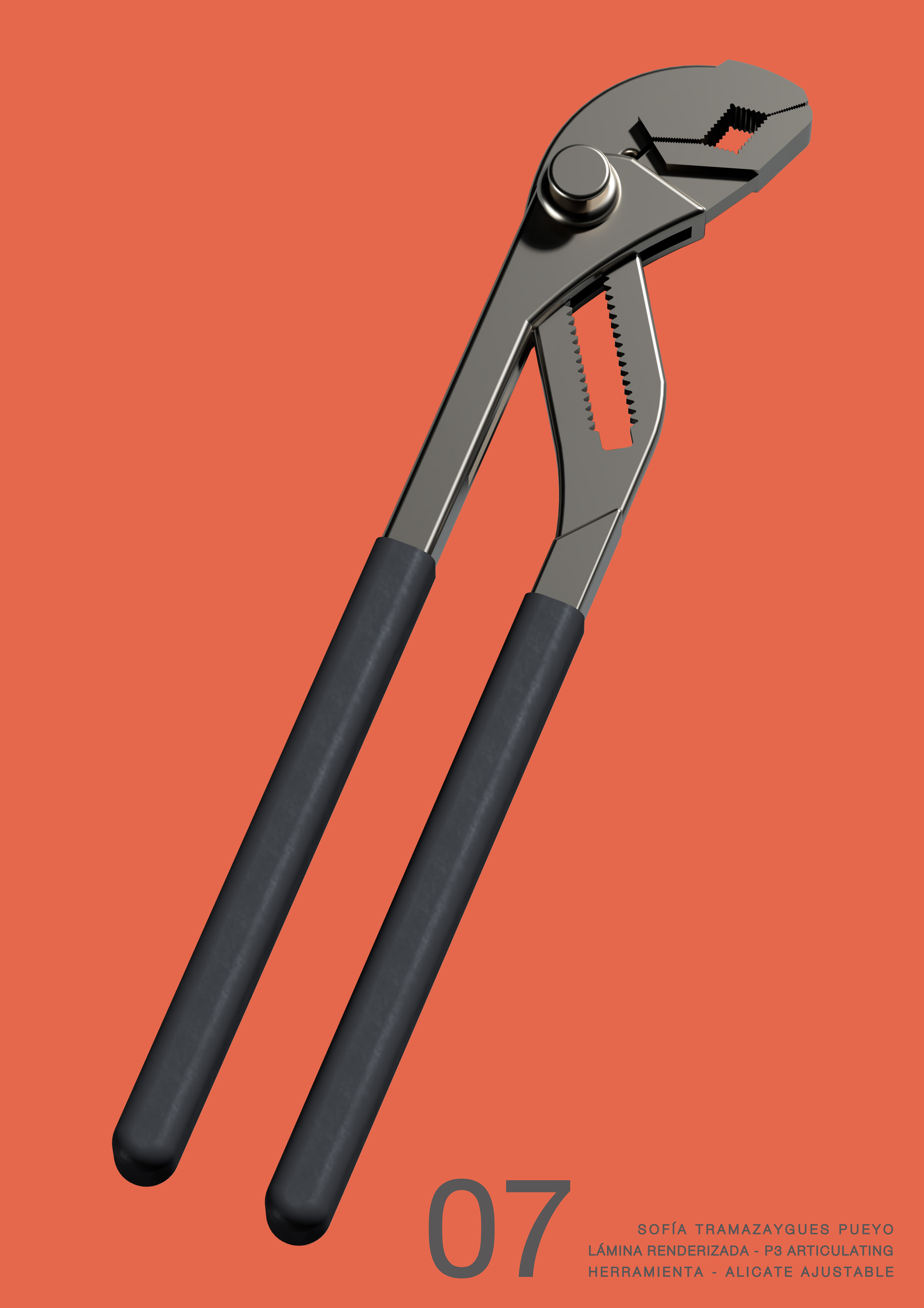
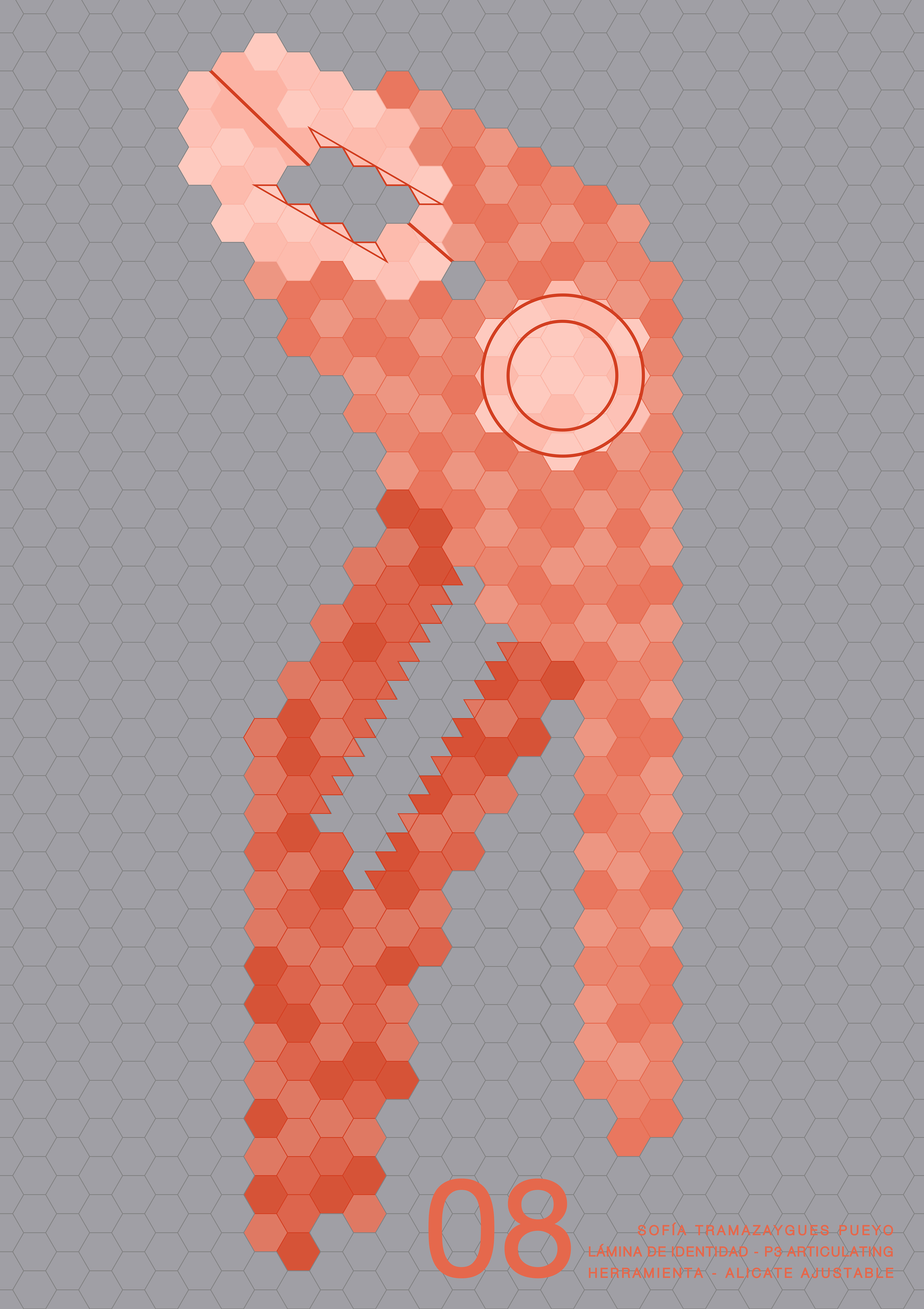
6.) User and Use
The ergonomics of the tool and how the user interacts with it are depicted in multi-position illustrations, with movement and user contact areas highlighted.
7.) Reality
To bring the prevailing dimensionality into the three-dimensional field, the 3D model of the rendered tool brings realism, and is presented against a simple background so as not to take the focus off the tool.
8.) Identity
The geometry of the object as the basis of its functionality and identity is something that was transmitted through a matrix in the form of a mosaic of hexagons, which alludes to the shape of the hexagonal nuts that pliers work with the most. However, more detail is brought to areas of interest and importance through clean lines and a geometry more precise than the hexagon, all without breaking the rules of the matrix.
9.) Innovation
The transformation of the plier mechanism into something completely new and improved is where the real value of the project lies. By maintaining the same scale as the original mechanism in the pliers, the object was transformed. The suction grip provided by the pliers safety button mechanism can be used to optimise the design of an ordinary door latch. The need for a locking bar and chain is eliminated by combining them with the grip and force of the plier mechanism. Its copper design with the hexagons present alludes to the original identity of the pliers.
